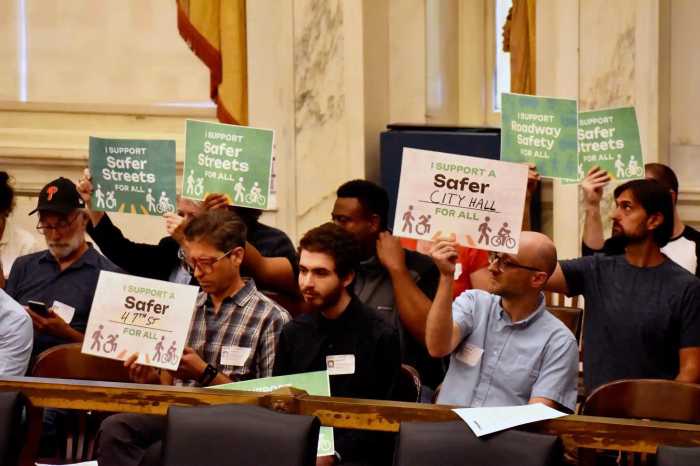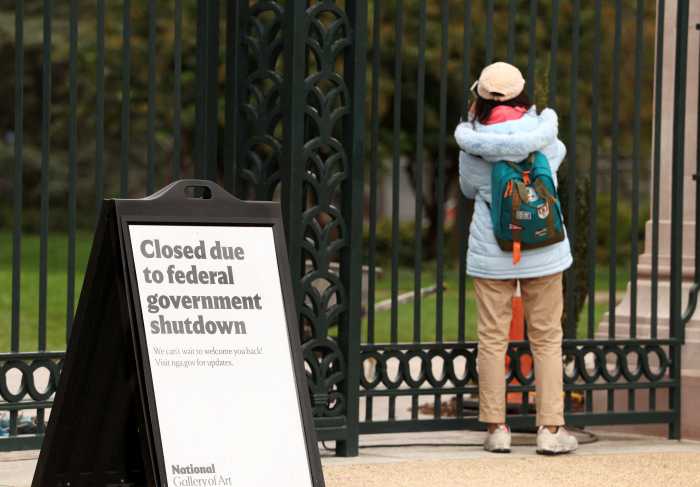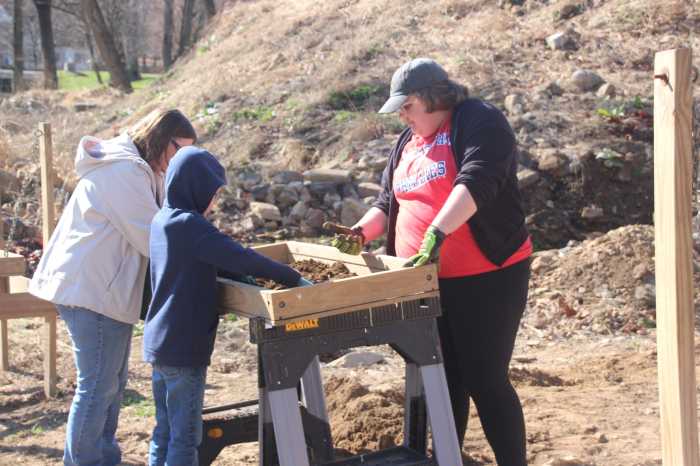SEPTA is expediting a plan to get rid of a troubled fleet of all-electric buses after a massive fire damaged dozens of vehicles Thursday morning on a lot within the authority’s Nicetown maintenance facility.
Investigators told SEPTA on Friday that the blaze was an electric fire caused by a lithium-ion battery, the energy storage devices used in buses manufactured by Proterra, authority spokesperson Andrew Busch told Metro.
Employees at the adjacent SEPTA Roberts railroad yard noticed the flames at around 6:15 a.m. Thursday, according to authorities. The fire broke out in an area of the Midvale depot where the authority stores decommissioned buses, officials said.
Eventually, the incident grew to a three-alarm incident, prompting the response of 150 fire personnel. SEPTA, the Philadelphia Parking Authority and the city’s Office of Emergency Management towed away unaffected buses to allow crews to access the flames and prevent further spread, according to authorities.
The blaze was considered under control by 8:10 a.m., the Fire Department noted. No injuries have been reported.

Forty buses were damaged, including 16 Proterra electric vehicles – one of those buses burned a second time, having been involved in a 2022 fire at a South Philadelphia maintenance facility, SEPTA officials told reporters.
In that prior incident, coolant leached into the battery, causing a short that made the Proterra bus burst into flames, authority leaders said. None of the vehicles have been put back into service in the intervening years
SEPTA paid about $24 million for the Proterra fleet, which hit the streets in 2019 but were pulled only months later when cracks were discovered. While the SEPTA and the manufacturer were working on fixes, the one-bus fire happened at the system’s Southern District Depot.
The authority is involved in litigation against the company, which has since had its divisions sold off as part of bankruptcy proceedings.
Scott Sauer, SEPTA’s general manager, said the agency had been holding on to the 25 Proterra buses due to the lawsuit. On Thursday, even before fire officials determined the cause of the flames, Sauer said he now wanted them gone.
“We have to get them off of our property, away from the potential where we could have an incident like this that could have been far worse,” Sauer said. “We don’t want to lose an entire facility, and, more importantly, we don’t want to hurt anyone.”
“We’ve all agreed that we don’t want them anymore, so we just want to be done with them,” he added.

Authority officials said the Proterra buses were moved to Midvale in October. Crews disconnected the batteries, drained the coolant fluid and have been conducting ongoing inspections, as a precaution, Sauer said.
SEPTA replaces about 100 buses a year. Aging vehicles are taken to the Midvale yard, where they are prepared to be sold off or scrapped, the agency said. Some of the buses that were in the process of being decommissioned still had diesel in their tanks, Sauer added.
The Philadelphia Department of Public Health had been warning neighborhood residents to stay inside and shut their windows because of poor air quality. Health Commissioner Palak Raval Nelson lifted that recommendation Friday afternoon, as pollutants from the flames dissipated.
Earlier testing had found substantial particulate matter – which can affect breathability – and benzene, though levels of the latter fell below what is permissible for a constant, 8-hour exposure period, Raval-Nelson said. The most hazardous air quality was detected while the fire was still burning, health officials added.

The Bureau of Alcohol, Tobacco, Firearm and Explosives also responded to the fire. SEPTA Transit Police Chief Scott Lawson said the federal agency showed up because his department’s K-9 training facility is at Midvale. To train the dogs to detect explosives, transit police keep small amounts of incendiary substances on site, Lawson said. Officers removed the explosive samples from the area during the fire, he told the press.
Midvale, the authority’s largest depot, is located on Wissahickon Avenue, near Roberts Avenue, and the 100-vehicle bus graveyard is in the rear of the facility, with little public access, Sauer said. Hundreds of employees are on-site at any given time, and the facility operates 24/7.
Since the burned buses were not actively being used, the fire did not lead to any significant public transit delays.




























